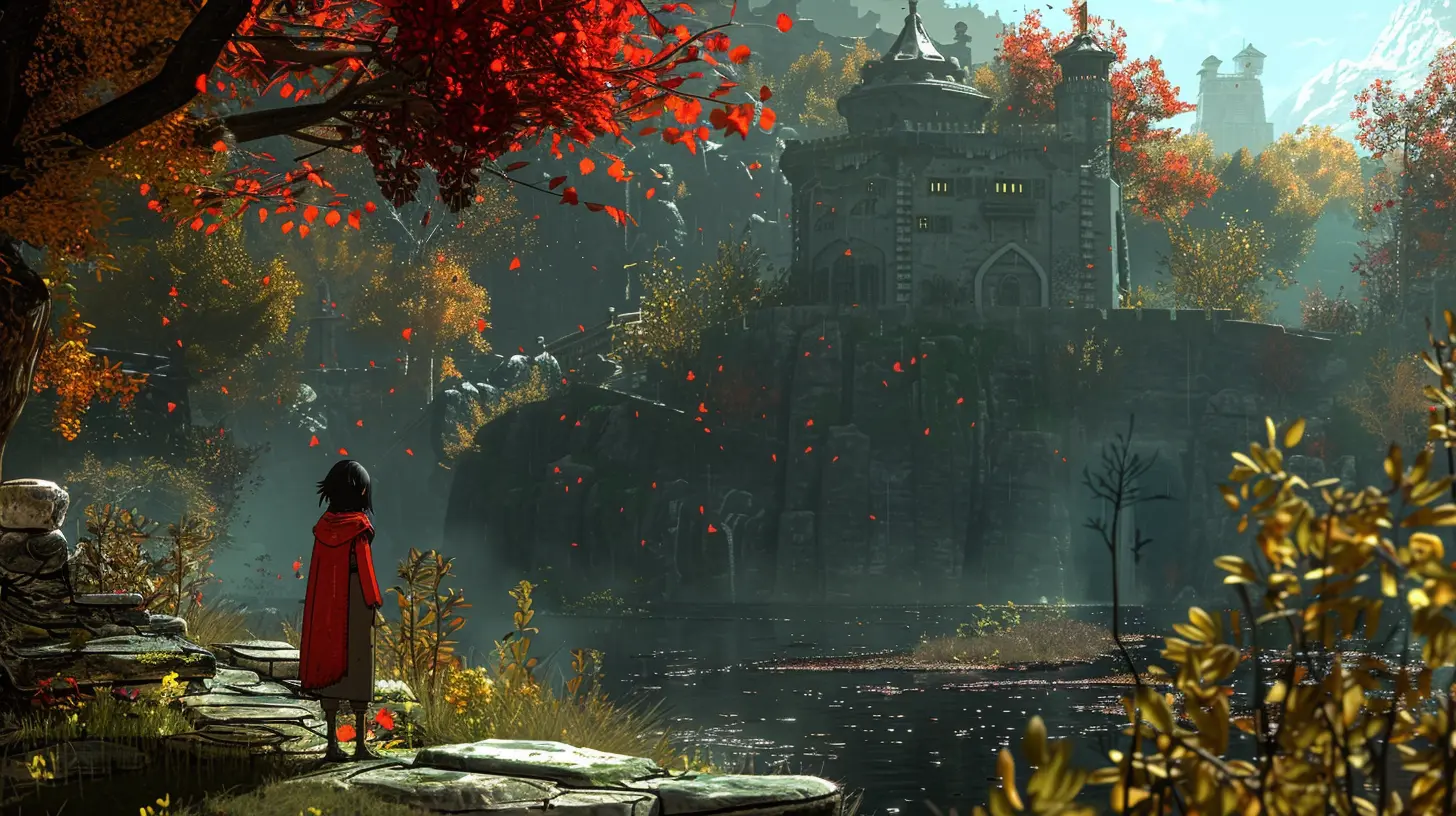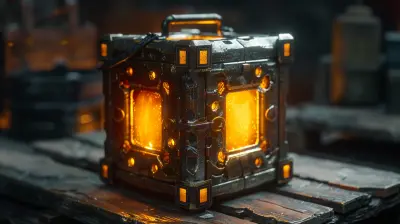The Role of Failure in Telling Meaningful Interactive Stories
14 December 2024
Have you ever played a game where a single failure made the whole experience more memorable, more visceral, and, surprisingly, more meaningful? Failure has a way of sticking with us, whether in the real world or within the confines of a virtual one. In the realm of interactive storytelling, failure isn’t just an obstacle—it’s a tool, a narrative device that deepens our connection to the story and enriches the overall experience.
In this post, we’re diving headfirst into the pivotal role failure plays in creating impactful interactive stories. So, if you’ve ever rage-quit a game only to come crawling back because you just had to see how the story ends—stick around. Let’s figure out why failure feels like such an integral part of good storytelling in games. 
What Do We Mean By "Interactive Stories"?
First, let’s clear the air. When we talk about interactive stories, we’re talking about any game where the player’s actions influence the narrative. Think of games like The Witcher 3, The Last of Us Part II, or even indie favorites like Undertale.These games aren’t just about running from point A to point B. They’re about engaging with characters, making choices, exploring branching narratives, and, sometimes, messing things up really badly. And let’s admit it—messing up can be fun (and frustrating in equal measure).
But failure here isn’t just about gameplay mechanics or losing a boss fight. It’s deeper than that. It’s about how failure impacts the story and, more importantly, your connection to it as a player. 
Why Failure Is Important in Storytelling
Have you noticed how failure is often a part of every great story? Luke Skywalker loses to Darth Vader before he learns the truth about his father. Tony Stark literally creates one of his biggest villains, Ultron, through hubris. Harry Potter fails to protect Sirius Black.Failure is humanizing.
It’s in these moments of vulnerability and struggle that we see characters (and by extension, ourselves) grow. When characters fail, we’re reminded they’re not invincible—they’re relatable. And when we witness or even experience failure in a game, it makes the successes feel that much sweeter.
Interactive storytelling magnifies this tenfold. Why? Because unlike a book or movie, you are the one pulling the strings. Your choices and mistakes are carved into the story forever. 
How Failure Adds Depth to Interactive Storytelling
1. It Makes Choices Matter
Imagine playing a game where every choice you make leads to a happy ending. No consequences, no drawbacks, no nail-biting moments where you’re second-guessing yourself. Sounds boring, right?Failure injects stakes into a story. Take Telltale's The Walking Dead, for example. When you’re deciding who to save or what to say in a tense situation, you know there’s always a chance you’ll mess things up. That fear of failure generates tension, and tension is the fuel of meaningful storytelling.
And here’s the kicker: even when you fail, the story moves forward.
This is what makes failure in interactive stories so dynamic. It’s not always a “game over” screen—it’s a pivot. Maybe your favorite character dies because of your decision. Maybe an ally loses trust in you. The story adapts to your failure, making it uniquely yours.
2. It Encourages Emotional Investment
Let’s be real—games are emotional rollercoasters. But failure plays a massive role in upping those stakes emotionally.Take Dark Souls, for example. That game is a masterclass in failure. You die, you die again, and then you die some more. Every loss is a crushing blow, but every victory feels euphoric because you earned it.
Now, bring that idea into a story-driven game. When you fail to save a character or make a morally questionable decision that comes back to haunt you, it creates a sense of guilt, regret, or even determination. These aren’t just scripted events happening to some protagonist—you feel responsible.
That emotional attachment is what differentiates games from other storytelling mediums.
3. It Reflects Reality
Life isn’t a straight line. We fail, we grow, and we try again. Games that incorporate failure into their interactive stories mirror this reality in a way that resonates on a deeply human level.For instance, in Life is Strange, your choices have both immediate and long-term consequences. Sometimes, there’s no “right” decision. And sometimes, no matter how hard you try, you can’t prevent certain tragedies from happening. Sound familiar?
Failure in interactive stories reminds us that the world isn’t always black and white. It’s messy, complicated, and often bittersweet.
4. It Sparks Replayability
Ever finished a game and thought, “Wait, what if I’d done something differently?” That is failure doing its job—making you curious and hungry to explore other possibilities.Games like Detroit: Become Human thrive on this. One small failure can dramatically alter the course of the story, forcing you to wonder how things could’ve gone if you’d just done X instead of Y.
Failure creates alternate paths, and alternate paths make you want to dive back in for a second, third, or even fourth playthrough. 
The Beauty of "Failing Forward"
What’s fascinating about failure in interactive stories is the concept of “failing forward.” This means that even when we mess up, the narrative doesn’t grind to a halt. Instead, it evolves, adapts, and sometimes even becomes stronger for it.Take The Witcher 3, for example. If you make all the “wrong” dialogue choices during Geralt’s interactions with Ciri, the story’s ending shifts to one where she doesn’t survive. Is it tragic? Absolutely. But is it meaningful? Without a doubt.
Failing forward ensures that failure isn’t the end of your story—it’s just a different version of it.
Tips for Designers: Using Failure to Tell Better Stories
Alright, let’s pivot for a second. If you’re someone interested in designing your own games, here are a few tips for incorporating failure into your storytelling:1. Make Failure Meaningful, Not Punishing
Nobody likes a game that throws you into an endless loop of dying and reloading without any story progression. Make sure failure drives the narrative forward rather than halting it.
2. Give Players Feedback
Help players understand the impact of their failures. A character might respond differently, or the world might change subtly based on the player’s actions.
3. Create Ambiguity
Not every decision needs a clear “right” or “wrong” choice. Often, the best interactive stories are the ones that make players agonize over what to do.
4. Reward Resilience
Players shouldn’t feel like they’re being punished for trying again. Keep them engaged by rewarding their persistence with minor wins or new story revelations.
So, Why Does This Matter?
At the end of the day, failure is what makes interactive storytelling so human. It connects us to the characters, it makes every decision feel weighty, and it creates stories we’ll remember long after the credits roll.When done right, failure becomes one of the most powerful tools in any game developer’s arsenal. And as players, it keeps us coming back for more, eager to see what’s next—even if it involves falling flat on our faces a few more times.
So, the next time you fail in a game, take a moment to appreciate it. After all, isn’t failure just another way to tell a great story?
all images in this post were generated using AI tools
Category:
Interactive StorytellingAuthor:

Lucy Ross
Discussion
rate this article
11 comments
Colt Allen
This article insightfully highlights how failure can enhance interactive storytelling by adding depth and emotional resonance. Embracing setbacks not only challenges players but also fosters a richer narrative experience, making the journey more memorable.
February 11, 2025 at 4:08 PM

Lucy Ross
Thank you for your thoughtful comment! I'm glad you found the discussion on failure's role in enriching interactive storytelling impactful. Embracing setbacks truly does deepen the narrative experience.
Ulrich McElroy
Loved this insight! Failure truly shapes our journeys in games, adding depth and meaning to our storytelling experiences.
January 29, 2025 at 5:08 AM

Lucy Ross
Thank you! I'm glad you found it insightful—failure indeed enriches our narratives and deepens player engagement.
Trixie McWain
Failure is not the end; it’s the stepping stone to growth in storytelling. Each setback enriches our journeys, allowing players to explore deeper emotions and lessons. Embrace the challenges—they're what make interactive stories resonate. Let’s celebrate the beauty of learning through failure and the unforgettable narratives it creates!
January 25, 2025 at 5:28 PM

Lucy Ross
Absolutely agree! Embracing failure enhances storytelling, deepens emotional connections, and creates richer narratives. It's a vital part of the journey that ultimately resonates with players.
Kassandra Clarke
Failure in games not only enhances narrative depth but also shapes player agency, creating a more immersive and thought-provoking interactive experience.
January 22, 2025 at 4:26 AM

Lucy Ross
Thank you for your insightful comment! I completely agree—failure indeed enriches narratives and empowers players, making their journey more engaging and impactful.
Uriel Young
This article beautifully captures how failure enriches our gaming experience and deepens emotional connections in storytelling. Thank you!
January 17, 2025 at 4:42 PM

Lucy Ross
Thank you for your kind words! I'm glad you found the connection between failure and emotional depth in gaming meaningful.
Gwen Lee
Failure in games is pivotal for narrative depth, allowing players to experience growth and resilience. It transforms setbacks into meaningful lessons, enriching the story and enhancing emotional engagement in interactive storytelling.
January 9, 2025 at 5:29 AM

Lucy Ross
Thank you for your insightful comment! I completely agree—failure not only deepens the narrative but also fosters player growth and emotional connection, making the interactive experience more enriching.
Ava Mason
Ah yes, nothing screams “meaningful narrative” like failing repeatedly. Who needs a compelling storyline when you can just hit restart and call it character development?
December 31, 2024 at 5:26 PM

Lucy Ross
Thank you for your perspective! Failure can indeed challenge characters and deepen narratives, allowing players to explore growth and resilience in ways that traditional storytelling might not.
Mae McConkey
Absolutely loved this article! 🎮✨ Embracing failure in games adds depth to storytelling, making every setback a stepping stone. It's beautiful how challenges can lead to meaningful experiences. Keep inspiring us with these insights!
December 26, 2024 at 4:27 PM

Lucy Ross
Thank you so much! I'm glad you enjoyed the article. Embracing failure truly enriches the storytelling experience in games. Your support means a lot! 🎮✨
Taylor Webster
Failure is essential; it deepens player engagement, enriches narratives, and creates unforgettable gaming experiences.
December 24, 2024 at 4:27 AM

Lucy Ross
Thank you! Absolutely, failure adds depth to gameplay and narrative, making experiences more impactful and memorable for players.
Damon Warren
Failure: the secret architect of stories.
December 16, 2024 at 3:33 PM

Lucy Ross
Absolutely! Failure adds depth and complexity to narratives, allowing characters to grow and resonate with audiences. It’s essential for crafting impactful interactive experiences.
Zachary Mathews
Failure enriches narratives, deepening player connection and understanding through authentic emotional experiences.
December 15, 2024 at 5:47 PM

Lucy Ross
Thank you! I completely agree—failure not only enhances the narrative but also fosters deeper emotional connections, making the player's journey more impactful and relatable.
MORE POSTS

Handling Technical Disruptions in Tournaments: Who Bears the Cost?

Thriving in Team-Based Multiplayer Shooters

The Psychology Behind Free-to-Play Game Design

Can Loot Box Systems Be Balanced and Fun?

Understanding Meta Shifts in Competitive Play

Why Steam’s Review System Matters More Than Ever

Understanding the Competitive Meta in Major Tournaments

Breaking Down the Rivalries Between Esports Powerhouses